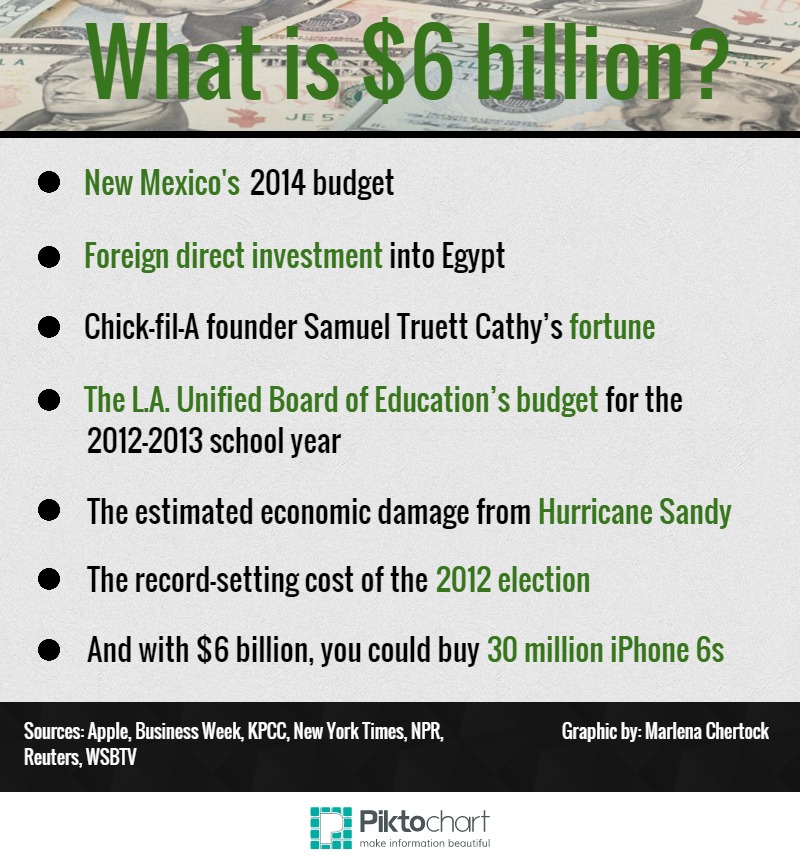 I just finished my second week in the Marketplace D.C. Bureau, a small and welcoming place. I’m enjoying getting back into radio after reporting for newspapers for the past few years.
I just finished my second week in the Marketplace D.C. Bureau, a small and welcoming place. I’m enjoying getting back into radio after reporting for newspapers for the past few years.
Here’s what I’ve been up to.
Some pats on the back
I realized that Marketplace Tech was featuring a series on how technology has changed the way we read. I researched some other ideas and angles for the series, and ended up writing a story on my third day about apps and technology that help low-vision readers. Read the story: Beyond magnifying glasses: High-tech options for the vision-impaired.
I worked with reporter Scott Tong to show readers what $6 billion means. Scott reported on the possible $6 billion anti-terrorist campaign against ISIS, and I made a graphic to go with his story. View the graphic at the bottom of the story: What a $6 billion anti-terrorist campaign amounts to.
Reporter Nancy Marshall-Genzer was working on a story about the short congressional workweek. I attended a press conference by Congressman Rick Nolan to take photos and collect audio for her story. View the photo and listen to the audio in her story: On that three-day congressional workweek.
Tape syncs
A tape sync is an interesting, if a little outdated, method radio journalists use to record certain interviews. Say reporter AJ is located in L.A. and he needs to interview source Barry, who is located in D.C. Well, AJ calls Barry up and interviews him on the phone, and a tape syncer is present to record Barry’s responses. After the interview, the tape syncer sends the audio to the reporter.
This week, I pushed a microphone in two source’s faces while they were interviewed on the phone by reporters. Then I rushed back to the station to send the audio along.
The key to being a good tape syncer is to be quiet and have good equipment. Marketplace uses Marantz recorders, which are some of the best in the industry.
I know there are other options today for radio reporters. They could record the source’s phone call in Audition or Audacity. They could have a source speak into any number of iPhone apps and then save and send the audio to the reporter. But these pose challenges. Sometimes phones muffle and distort voices. And sources can hold the microphone too close to their mouth or accidentally delete a recording.
Radio is all about high-quality audio. Thus, tape syncs still exist today, in our digital, fast-paced world.